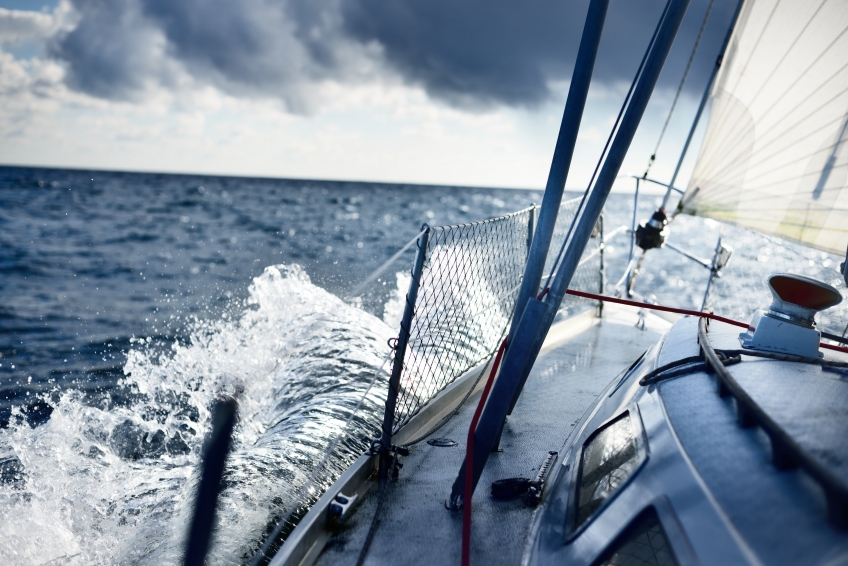
Our mid-August surprise is the incipit of the novel Pino Cacucci wrote for the book “Racconti di Mare” (“Maritime Novels”), curated by Mauro Ferraresi of the IULM University of Milan, published by Persephone, promoted by Acqua dell’Elba and showcased as a preview at SEIF – Sea Essence International Festival. Among other works, Pino Cacucci is best known as the author of novels such as “Puerto Escondido” as well as the recent “Frida”, dedicated to Frida Kahlo.
It would come to be known in the history of the island as the great coastal storm of 2008. Just the day before that, Dario was returning at full speed from an immersion in front of Cape Stella, where he had been looking for the wreck of a German fighter plane he had heard about in the stories of his old Elban friends, which often echoed those of their long departed fathers, and according to which a Messerschmitt 109 sank in that area after losing a duel with an English Spitfire.
He had started to fear that these stories were nothing but rumours: after all, many airplanes were lost in that sea during the war, and after many years it became increasingly difficult to identify them, under the various layers of sediments, seaweeds and encrustations.
Dario glared at the sky laden with angry black clouds and kept the engine power very close to maximum: he needed to reach Porto Azzurro as soon as possible, because the weather forecast for the next twenty-four hours had worsened significantly, and the waves were growing in size at an alarming rate.
According to the forecast, the “probable gale force winds” would make landfall on the south-eastern coastline, even though it was difficult to be more accurate considering the sudden variations in wind direction.
Gusts of Mistral were followed by blasts of north-easterly Grecale winds, with a tense southern Scirocco wind chiming in to create vortexes. ‘Just the perfect storm’, thought Dario, ‘when winds vary quickly and battle against each other’. Which is exactly what he was seeing. Just a few hours more, and he would be safe.
The diesel engine of the old Altair hummed along nicely, without missing a single beat. That old vessel was a reliable sailing boat, even though to be accurate, its real denomination was motor sailor. However, Dario used its sails very rarely, unless he had a friend aboard to help out with the manoeuvres.
An ancient 1939 motor sailor, a true English purebred, which somehow had made its way to the Tyrrhenian sea – it was a real shame that it didn’t have its own journal, because who knows how many stories it had seen throughout its long life. Dario liked to daydream that his Altair had taken part in the epic evacuation of allied troops at Dunkirk at the end of 1940, when thousands of vessels left the southern English coasts to go save the remnants of the British Expeditionary Force and of the French army, abandoned forlorn and defeated on a small strip of sandy beach far to the north of France, between Calais and the border with Belgium.
This daydream did have a small fundament in real life, actually, three of them: the bullet holes visible on the hull of the sailing boat, from which Dario, using lots of patience and time on his hands during long evenings at anchor, had dug out three machine gun bullets, perfectly conserved by the wood in which they had been encased. From his approximate measurements, he had persuaded himself they must have been calibre 7,92, which was the same calibre used by German MG34 machine guns.
So, during evenings spent drinking wine in Leo’s cellar at Capoliveri, he liked to claim without the shadow of a doubt that his Altair had taken part in operation “Dynamo” at Dunkirk: a claim which was initially received with admiration from fellow drinkers, only to soon turn into laughter and jokes. He laughed with them, though deep at heart he thought it was a real shame that boats could not tell their own story: he was convinced that each vessel had its own soul, though, alas, not its own voice.
The waves were already over two meters in height, soon they would be over three, and further on, who knew: he decided not to cut through open sea towards Punta Morcone, but instead to coast along the gulf, keeping close to Zuccale. In front of Pareti, he wondered if it was worth looking for a berth where he usually moored the Altair when the wind was coming from the other side, but finally he decided to reach the beach cove at Mola: that’s where his own buoy was, he had anchored it himself so he knew how strong its chain was and how heavy its cement anchor weighed.
Past the beach of Innamorata, he rounded the islets of Gemini, where as always his gaze ventured upwards by itself, towards the house on the cliff of Calone, and, also as always, he murmured to himself the same salutation:
“Ciao, Dolphin Man…”.
(...)
Discover the rest of this novel on the book "Racconti di Mare".



